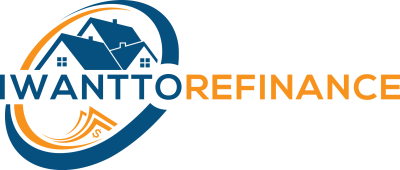Main Points:
-
Although many COVID-related mortgage assistance programs are ending, you may still qualify for mortgage relief.
-
Reach out to your mortgage loan servicer to inquire about options like forbearance or loan modification.
-
Research state government and federal agencies for mortgage assistance programs available in your area.
Table of Contents:
1. Understanding Mortgage Assistance
2. Who Can Benefit from Mortgage Assistance and Relief Programs
3. Mortgage Relief Options in 2022
4. Considerations Before Choosing a Mortgage Relief Program
Introduction:
Facing difficulties in paying your mortgage and struggling to meet your financial obligations can be overwhelming. However, there are mortgage assistance options and relief programs that may alleviate your burden. This article aims to provide information on mortgage relief solutions available in 2022.
Understanding Mortgage Assistance:
If you have a mortgage but are experiencing challenges in making payments, you are not alone. Many borrowers find themselves unsure of where to seek help when facing financial hardships such as job loss, the death of a loved one, or significant medical expenses.
Fortunately, there are mortgage relief programs and other options that can ease financial anxiety without the immediate risk of losing your home.
"Mortgage relief and assistance programs are offered by various entities, including mortgage lenders, with the goal of keeping homeowners in their homes and ensuring they can continue making mortgage payments. Different programs offer ways to modify loans or temporarily pause mortgage payments to prevent foreclosure," says Martin Orefice, CEO of Rent To Own Labs.
According to Grant Higginson, a debt relief expert, these programs can help borrowers catch up on missed payments and reduce their monthly mortgage payments. It's crucial to research and explore all available options to ensure the chosen program aligns with your unique situation.
Who Can Benefit from Mortgage Assistance and Relief Programs:
Various circumstances and situations may necessitate financial hardship assistance.
"Good candidates are those who, with some lifestyle adjustments and financial guidance, can regain control of their lives. These individuals need to learn how to work with their current resources," says Adam Garcia, founder of The Stork Dork. "Financial hardship programs are designed for people who find themselves overwhelmed by debt they can't manage. These programs help individuals take control of their finances, reduce expenses, and tackle debt."
Higginson suggests the following scenarios as potential candidates for exploring mortgage assistance and relief:
1. Homeowners struggling with monthly mortgage payments: A mortgage relief program can help lower the monthly payment amount.
2. Homeowners at risk of defaulting on their loan: Assistance programs can help prevent foreclosure.
3. Homeowners with adjustable-rate mortgages facing potential interest rate increases: The right option can help lower the interest rate.
4. Homeowners with high fixed interest rate loans: Taking advantage of a suitable mortgage relief program or alternative loan can improve credit and lower the interest rate.
Mortgage Relief Options in 2022:
Unfortunately, there are currently no federal government mortgage stimulus programs or rescue packages available. However, there are alternative options to explore to avoid financial risks when you own a home with a mortgage. Consider the following mortgage assistance strategies:
1. Mortgage Refinance: Refinancing your mortgage loan is often the simplest way to lower monthly costs and increase affordability. It involves obtaining a new loan to replace the existing mortgage, usually to reduce the interest rate, save money over time, and potentially lower monthly payments or shorten the loan term.
2. Streamline Refinance: If you have an FHA loan, you may be eligible for a streamlined refinance that involves fewer documentation requirements and an expedited closing process. The Department of Veterans Affairs offers a similar program for borrowers with VA home loans. USDA home loan borrowers have options for streamlining refinances as well.
3. Forbearance: If you find yourself struggling with mortgage payments, you can request forbearance from your lender, which temporarily lowers or suspends mortgage payments for a specific period, typically 3 to 6 months. After the forbearance period ends, regular monthly payments resume, often with accrued interest. Qualifying for forbearance usually requires demonstrating financial hardship.
4. Loan Modification: Loan modification involves modifying the terms of your existing mortgage loan, such as reducing the interest rate, extending the loan term, or a combination of both. This option assists borrowers who have difficulty making timely payments or are at risk of defaulting. Eligibility typically requires being behind on mortgage payments and demonstrating an inability to afford the current payments.
Considerations Before Choosing a Mortgage Relief Program:
Before applying for or enrolling in any mortgage relief program, it is essential to conduct thorough research.
"Some programs may negatively impact your credit score or affect your ability to sell your home in the future," warns Orefice. "Ensure you fully understand all the details and terms of the program or loan before committing to any assistance plan."
Carefully review the fine print, including terms and conditions, associated with the program. Take the time to compare different programs and options to find the most suitable one for your situation. Additionally, be aware that any particular program may carry risks, such as the possibility of losing your home if you default on the loan or fail to abide by the terms.


